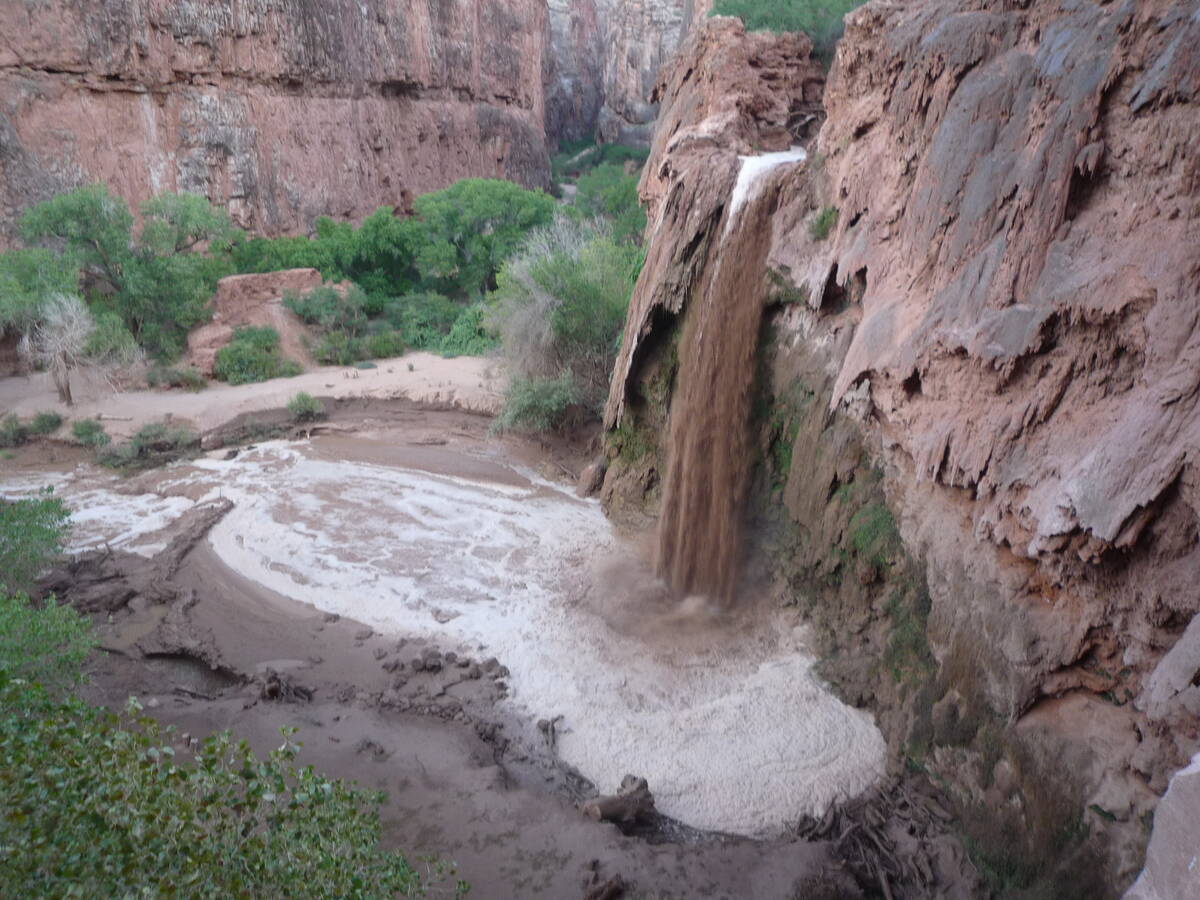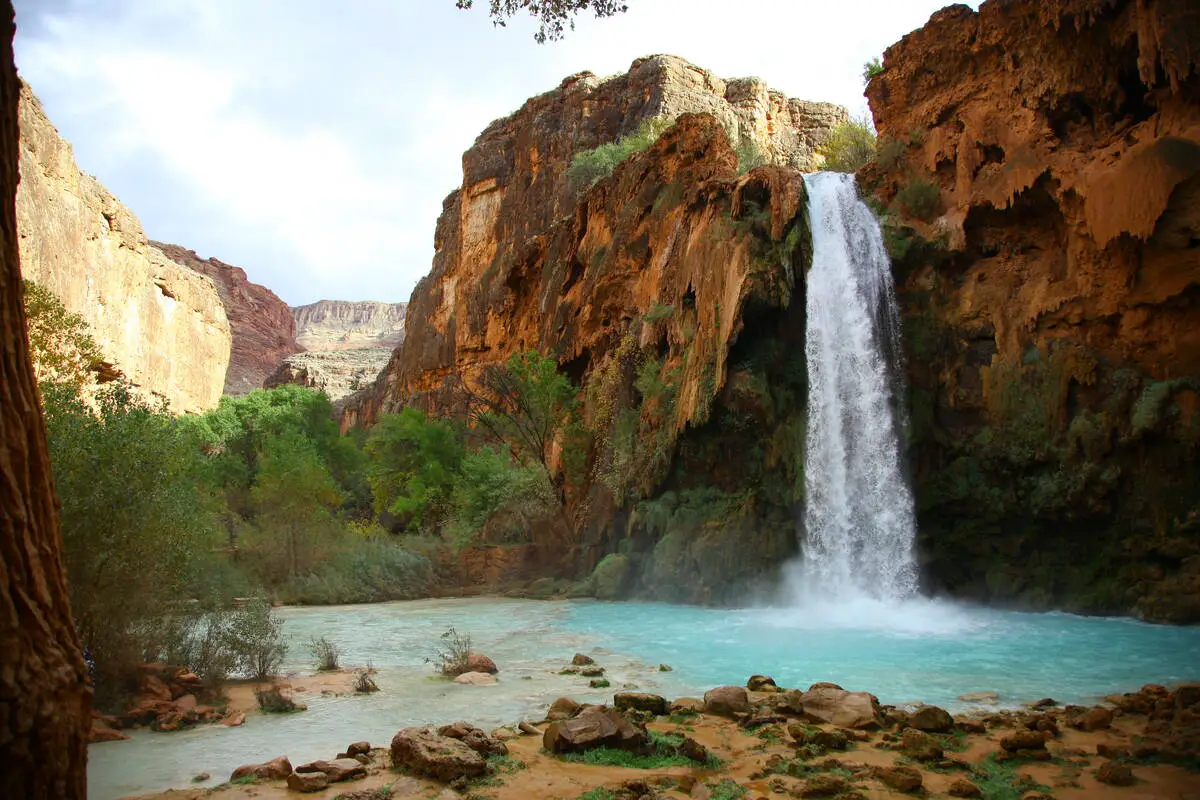World 🢖 North America 🢖 United States 🢖 Arizona
Waterfalls 🢔 Geological wonders 🢔 Categories of wonders
Wonder
Havasu Falls
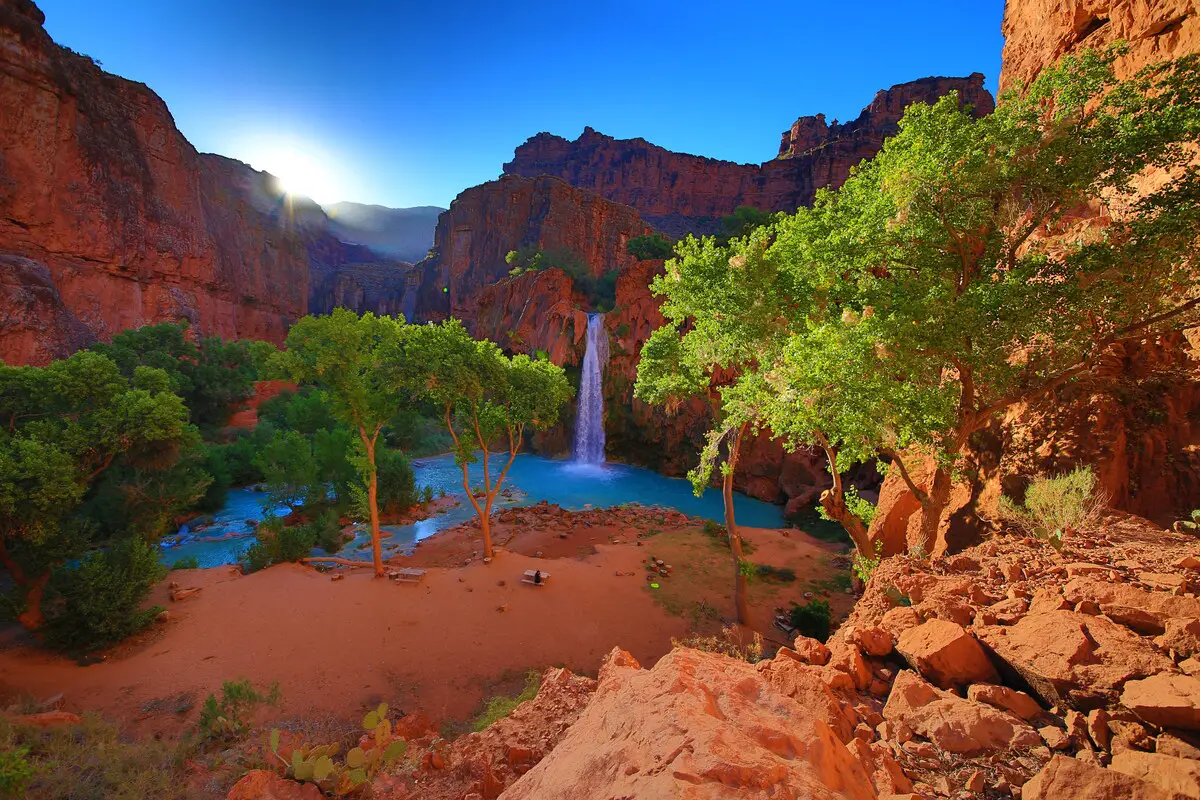
 In short
In short
The second-tallest waterfall on Havasu Creek is Havasu Falls, a gorgeous, some 30 m tall waterfall. The water has an unusual blue color that contrasts with the red color of the cliffs. Below the falls have formed travertine terraces.
 50.9%
50.9%
GPS coordinates
Location, address
Map of the site
If you see this after your page is loaded completely, leafletJS files are missing.
 In detail
In detail
Geology and unusual colors
Havasu Creek is a tributary of the Colorado River in Arizona. It is located in one of the scenically most beautiful locations on Earth – in the Grand Canyon area. But, if this is even possible, Havasu Canyon in some aspects is even more beautiful!
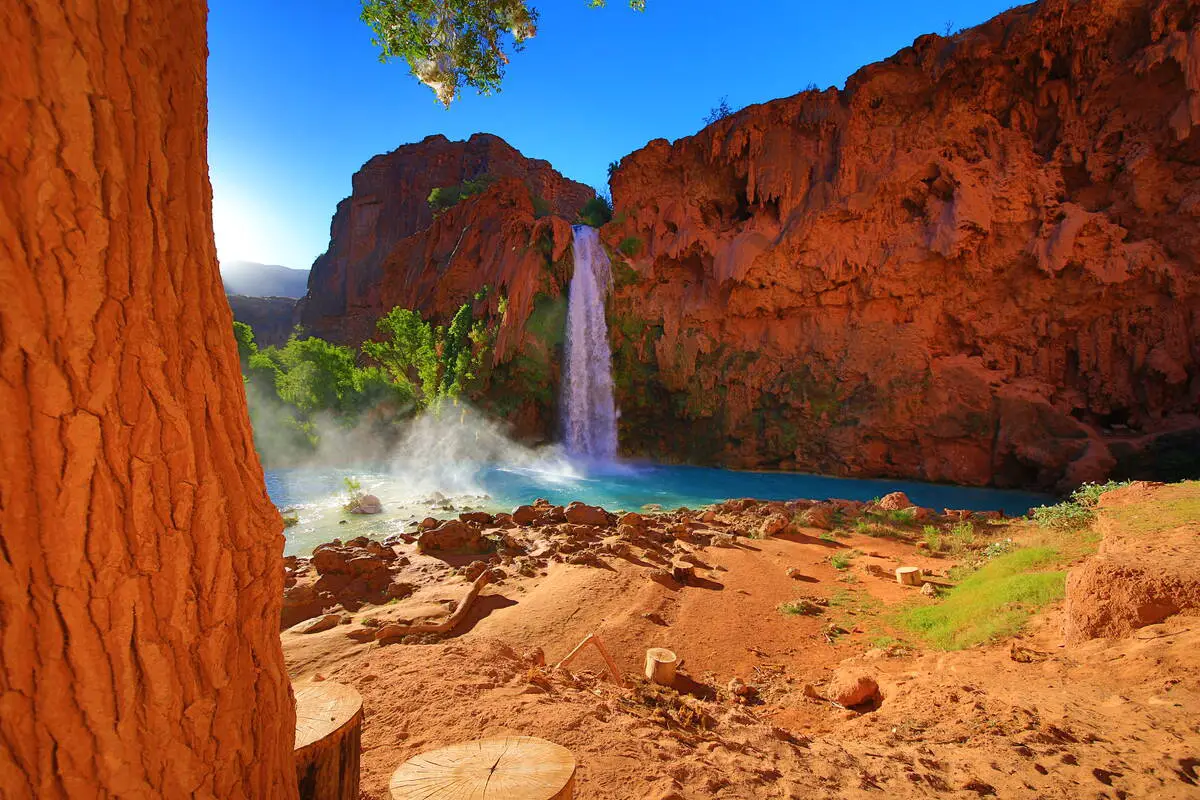
Most of the water in Havasu Creek comes from several powerful springs south of Supai village. The water of these springs is rich in calcium carbonate. The water has dissolved it underground, in the Redwall Limestone, most likely creating large caverns that are waiting for their discovery.
The calcium carbonate forms countless small particles in the water that change the color of the stream. Thanks to it Havasu Creek has an unusual light blue-green, turquoise color that continues up to the mouth of this stream in the Colorado River. These particles gradually stick to the bottom of the stream, initially forming soft, cavernous tufa that after some time becomes harder and turns into travertine.
Havasu Creek has made a deep incision – a canyon – in the Redwall Limestone formation. The cliffs of this formation usually are stained with red color.
Thus: a turquoise-colored stream flows through red-colored rocks. This is a rare sight indeed!
Waterfalls and travertine terraces
Between Supai village and the Colorado River in Havasu Canyon are five-six larger waterfalls and countless smaller travertine terraces. The main waterfalls (starting from Supai) are:
- Fiftyfoot Falls
- Navajo Falls (Lower Navajo Falls)
- Havasu Falls
- Mooney Falls
- Beaver Falls
There are also many smaller waterfalls in between these large falls.
From time to time the waterfalls change due to floods, especially the first three ones.
Usually the force of water forms a plunge pool below the falls – and in Havasu Canyon, these plunge pools are further adorned with natural walls: travertine terraces. If there has been a long period without catastrophic flash floods, the travertine walls grow tall enough to form a beautiful natural swimming pool in turquoise blue water between red cliff walls! But then, alas, fierce floods come and destroy them… and then again, step by step new walls come up.
Description of Havasu Falls
Havasu Falls are the second-tallest falls on Havasu Creek after Mooney Falls (58 m).
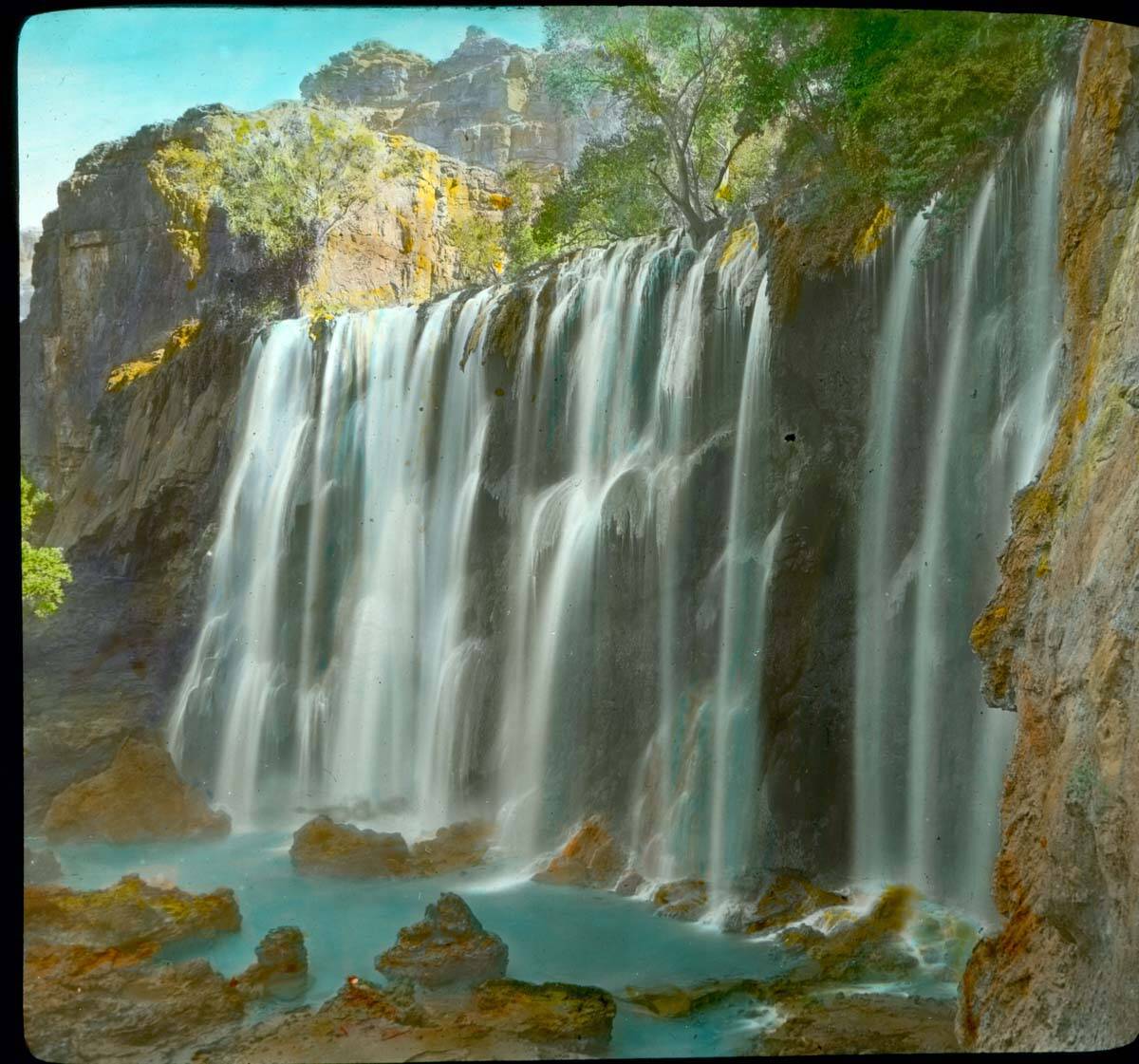
The height of Havasu Falls is changing. At the end of the 19th century and early 20th century, it was a wider waterfall that was at least 40-45 m high. The water fell in numerous smaller trickles, forming a beautiful curtain. Due to this, it was named Bridal Veil Falls then.
Then, in the morning of 2nd January 1910 a catastrophic flash flood came. Some 6 meters high wall of water rushed over Supai village, entered the narrow canyon at the falls, and with extreme force washed out some 9 meters deep incision in the middle of the falls.
Since then waterfall has one or (sometimes) two streams that, initially, slide down along a steep tufa channel and then plunge through the air into a light blue-green pool.
Usually the flow of water through falls does not exceed 2 m3 per second, but, during flash floods, it can increase hundreds of times. Thus, in September 1990 the flow reached 575 m3/s. Such a mass of water can wash away almost anything.
In the 1990ies Havasu Falls was approximately 37 m high but after several floods, the height decreased, and around 2010 it was approximately 30.5 m high.
The pools below the falls have changed as well. At times there were beautiful, blue pools with tall travertine walls, but at times these pools were filled with debris, the walls were damaged and new ones grew.
Land of Havasupai
For more than 1000 years this unusual valley is the home of Havasupai – “People of the Blue Green Waters”.
The main settlement of these people is Supai, an ancient village upstream from waterfalls, in the fertile valley (although from time to time floods wash the soil away).
Havasu Valley is remote and hard to reach up to this day. There are no roads: one can reach the village (and waterfalls) only by a walking trail or by helicopter.
The beautiful landscape in Havasu Canyon is sacred to the Havasupai people.
Tourism
Tourist visits started in this area in the 1970ies when the tourism industry “discovered” the gorgeous areas near the hugely popular Grand Canyon.
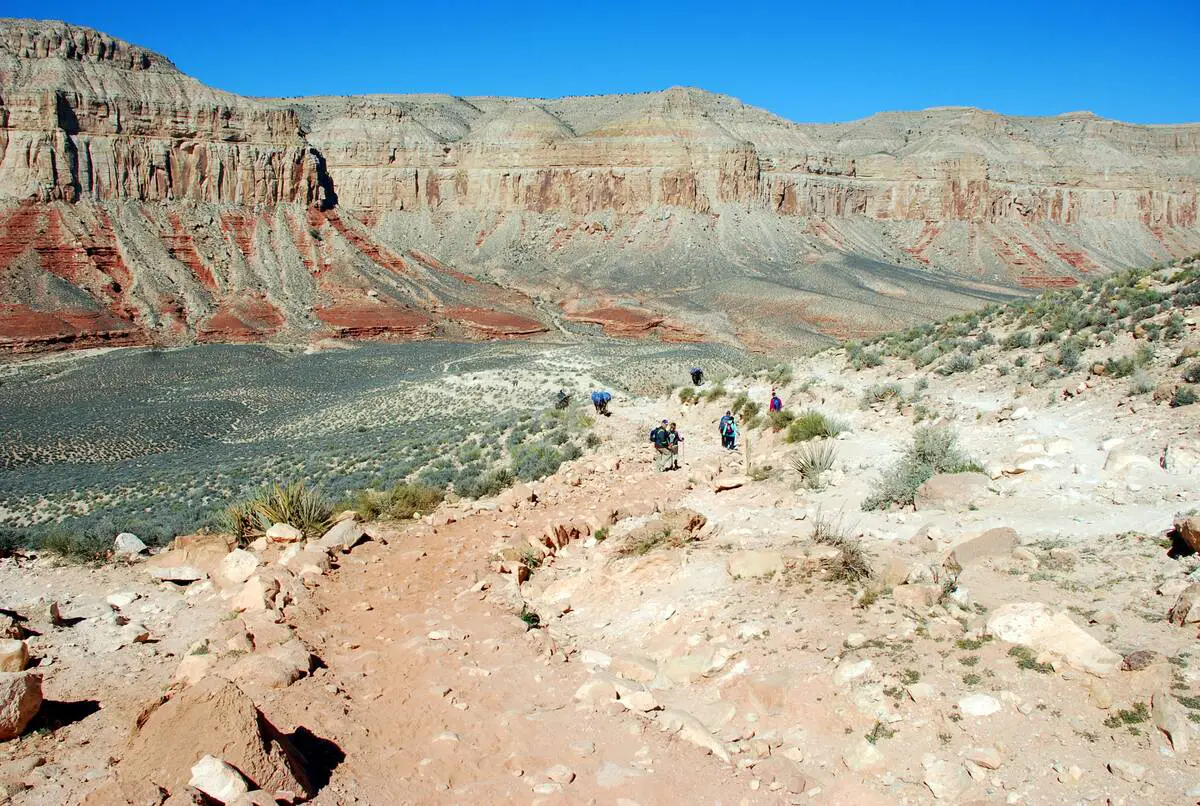
The community of Havasupai controls the access to Havasu Canyon and, thanks to them, mass tourism has not come to this area.
No outsider can come here without a permit and this permit comes with conditions, including an obligatory overnight stay in the valley.
The demand for these permits increased over the 2010ies and it even was a bit of luck to get one. The number of visitors increased to 10 000 per year.
In 2018 and 2019 the floods damaged the visitor infrastructure in the area. This damage, the adverse impact of tourism, and also the Covid-19 outbreak led to the closure of the canyon to outside people in 2021 and 2022.
The visit itself is not that simple either. Visitors leave their cars and walk 13 kilometers through a breathtaking and physically demanding terrain to Supai (or pay for a helicopter ride). The heat during the day may exceed 46° C – thus, a wise choice is to start this walk early in the morning. And then visitors can enter the Havasu Canyon. The walk in the canyon is not easy either, in some locations, it can be quite frightening to those who are afraid of heights.
But all these hardships are rewarded by the unusual, otherworldly beauty!
References
- The Havasupai Tribe, official website. Accessed on October 26, 2022.
- Havasu Falls, World of Waterfalls. Accessed on October 26, 2022.
- Theodore S. Melis, William M. Phillips, Robert H. Webb, and Donald J. Bills. When the Blue-Green Waters Turn Red. Historical Flooding in Havasu Creek, Arizona, U.S. GEOLOGICAL SURVEY Water-Resources Investigations Report 96—4059. 1996. Accessed on October 26, 2022.
 Linked articles
Linked articles
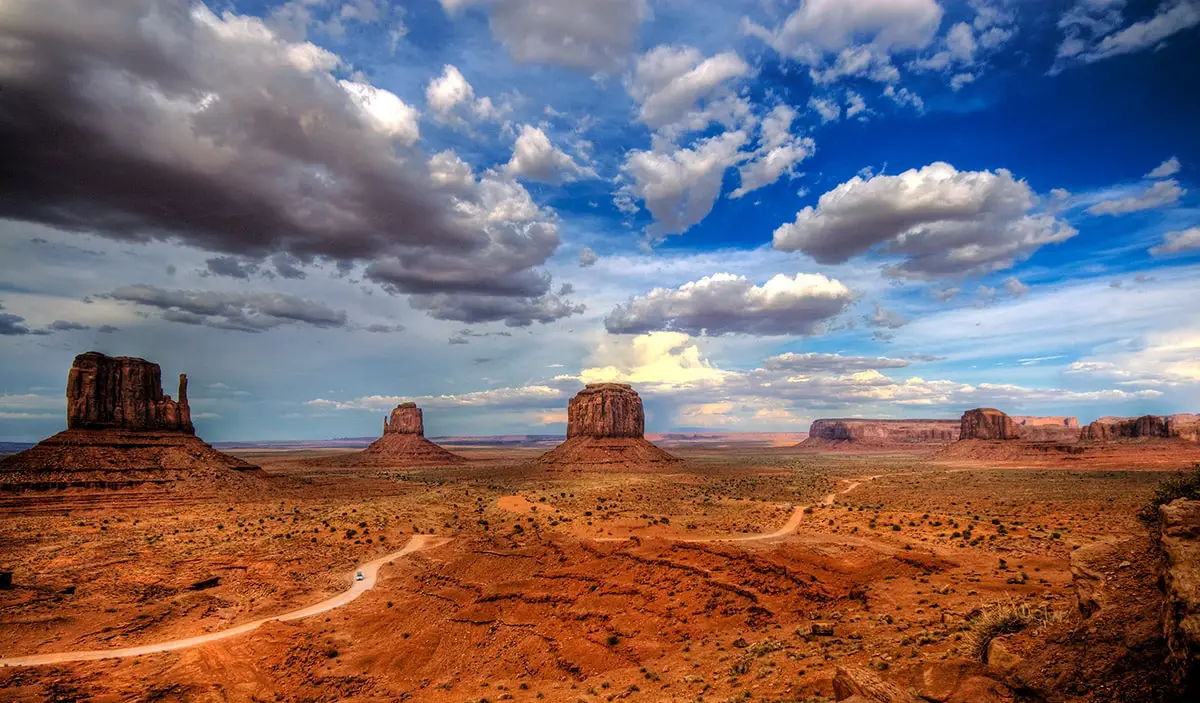
Wonders of Arizona
Some of the world’s most impressive sights are located in Arizona. This American state has such landmarks of world fame as the Grand Canyon and Monument Valley.
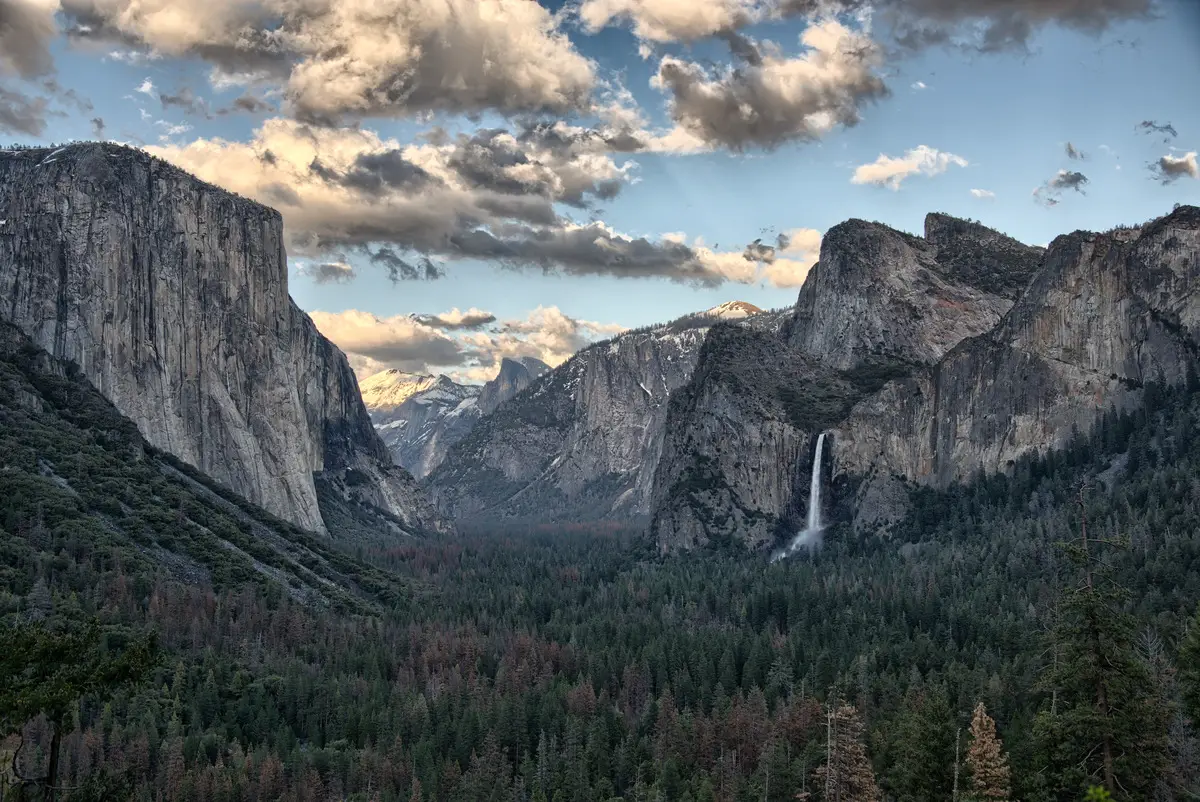
Wonders of the United States
The United States of America is one of the largest countries in the world and offers a wide array of diverse attractions: many are unsurpassed in the world. Highlights of the United States are cliffs, canyons, and rock formations, several impressive downtowns of cities with numerous skyscrapers as well as a rich array of geothermal features, and the giant forest of California.
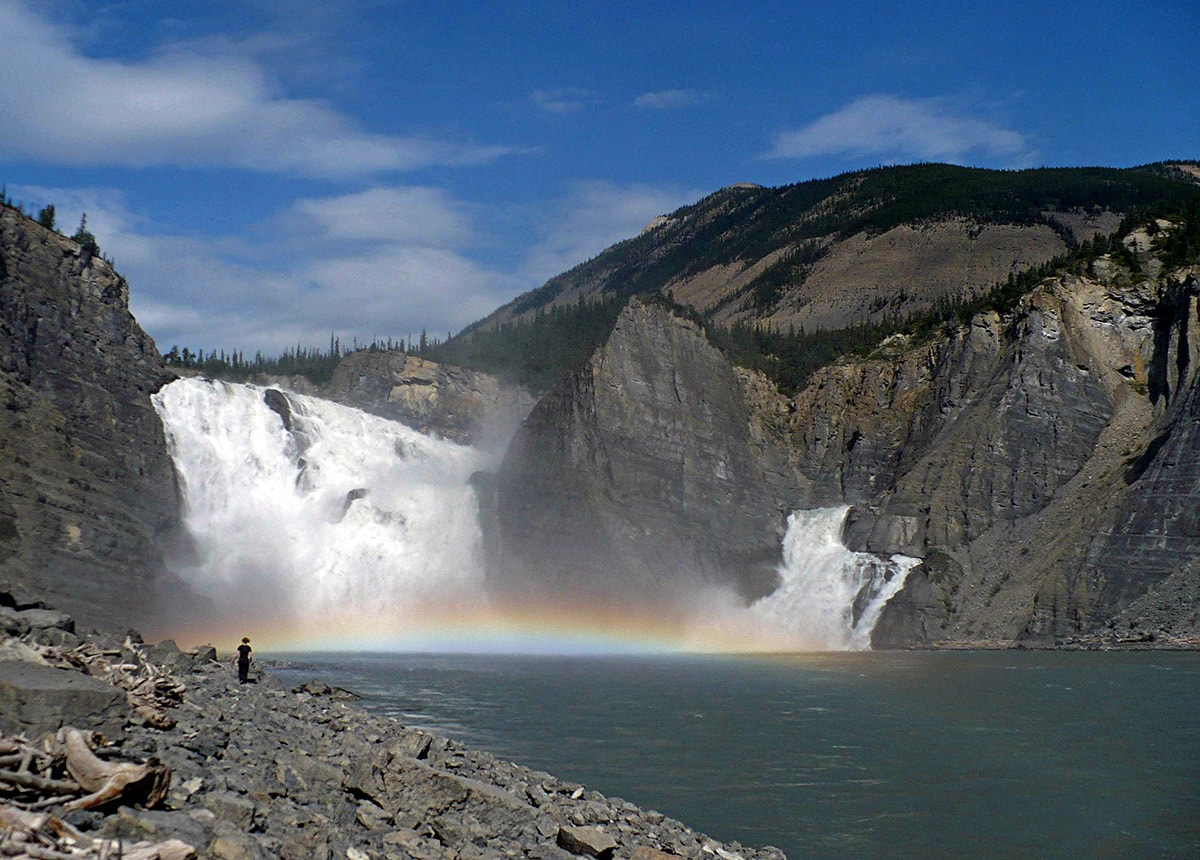
Waterfalls
Some of the most fascinating and awe-inspiring natural monuments are waterfalls or locations where a river abruptly changes its elevation.
 Recommended books
Recommended books
Arizona State Parks: A Guide to Amazing Places in the Grand Canyon State
Home to one of the Seven Natural Wonders of the World, Arizona is a beacon for outdoor enthusiasts–the desert landscape is brimming with opportunities for exploration and adventure. In this guide we join travel writer Roger Naylor as he takes us through the state parks of this amazing region. The parks featured throughout this book offer some of the best hiking, camping, fishing, boating, stargazing, and wildlife watching in the state.
Exploring Havasupai: A Guide to the Heart of the Grand Canyon
Deep in the Grand Canyon lies a place of unmatched beauty―a place where blue-green water cascades over fern-clad cliffs into travertine pools, where great blue heron skim canyon streams, and where giant cottonwoods and graceful willows thrive in the shade of majestic sandstone cliffs. Havasupai is a paradise enveloped in one of the earth’s most rugged and parched landscapes.

